


Crafting Your Inner World
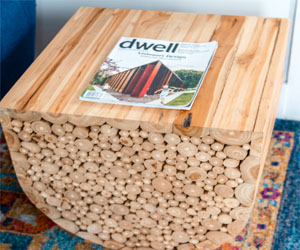
Woodworking is not merely a hobby; it's a journey of self-expression, a profound art form that allows individuals to convey their innermost thoughts, emotions, and creativity through the medium of wood. While it may be seen as a practical skill, it's so much more than that—it's a means of connecting with one's inner self and sharing that connection with the world.
The Medium Of Wood: Wood, as a medium, possesses a unique charm. It's a canvas that speaks to the senses. The smell of freshly cut wood, the feel of grain under your fingertips, and the sight of the intricate patterns and colors in different types of wood can be incredibly inspiring. As a woodworker, you have the privilege of translating these sensory experiences into tangible creations that mirror your emotions and imagination.
Creativity Unleashed: Woodworking provides a blank canvas on which you can paint your creativity. Whether you're crafting a meticulously designed piece of furniture, an ornate wooden sculpture, or a functional household item, every project is an opportunity for self-expression. The process of envisioning a project, selecting the wood, planning the design, and executing it involves making a series of artistic choices. These choices reflect your personal style, your interpretation of the world, and your emotions at the moment of creation.
Emotional Release: For many woodworkers, the act of working with wood is a form of catharsis. The physicality of shaping and molding wood, combined with the rhythmic sounds of saws and the tactile feedback from the tools, can be a meditative and soothing experience. It's a way to release stress and express pent-up emotions. Some woodworkers even create pieces that embody their feelings, allowing them to externalize and share what might otherwise remain hidden.
Craftsmanship And Precision: Woodworking is an art that demands precision and craftsmanship. The attention to detail, the patience required, and the meticulous nature of the work all contribute to a sense of personal accomplishment. In each piece you create, you leave a piece of yourself—a testament to your dedication, skills, and the values you uphold.
Function Meets Form: Woodworking marries functionality with aesthetics. The objects you create serve practical purposes while also being beautiful. Your craftsmanship ensures that everyday items become works of art. The balance between utility and aesthetics allows you to infuse your creations with a sense of purpose and meaning.
Sharing Your Inner World: Woodworking also gives you the opportunity to share your inner world with others. When you gift a piece to a loved one or display your creations in your home, you're inviting people to experience a part of your soul. The stories, emotions, and passion that went into each piece can be conveyed to those who view or use your creations.
Woodworking is a remarkable medium for self-expression. It's not limited to the skill of working with wood; it encompasses the expression of your inner self, your emotions, and your unique perspective on the world. Every piece you create becomes a testament to your creativity, craftsmanship, and the emotions you invest in your work. Whether you're a seasoned woodworker or a beginner, embrace this beautiful journey of self-expression through woodworking, and let the grains of wood whisper your stories to the world.
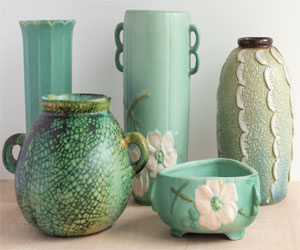 Handbuilding: Handbuilding is one of the most fundamental and versatile techniques in pottery. It involves using the hands to shape the clay. This can be done through techniques such as pinching, coiling, and slab-building. Pinching entails squeezing and forming the clay, coiling is the process of building up the form with clay ropes, and slab-building involves using flattened sheets of clay to construct objects. Handbuilding allows for a great deal of artistic expression and often results in unique, irregular forms.
Handbuilding: Handbuilding is one of the most fundamental and versatile techniques in pottery. It involves using the hands to shape the clay. This can be done through techniques such as pinching, coiling, and slab-building. Pinching entails squeezing and forming the clay, coiling is the process of building up the form with clay ropes, and slab-building involves using flattened sheets of clay to construct objects. Handbuilding allows for a great deal of artistic expression and often results in unique, irregular forms.
Wheel-Throwing: Wheel-throwing, or throwing, is a technique where the potter shapes clay on a rotating wheel. The wheel's motion allows for even and symmetrical forms, making it ideal for creating functional items like bowls, cups, and vases. Potters use their hands and various tools to manipulate the clay as it spins, drawing upon their skill and precision to achieve the desired shape and texture.
Coiling: Coiling is a method where clay ropes or coils are stacked and joined together to create a three-dimensional form. It is one of the oldest pottery techniques, with historical examples dating back thousands of years.

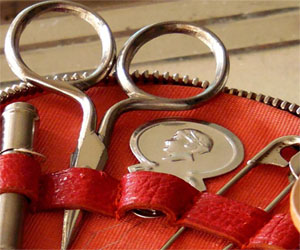
A Glimpse Into Monastery Brewing
 The Origins Of Monastery Brewing: The roots of monastic brewing can be traced back to medieval Europe, when monasteries were not only centers of spirituality but also hubs of agriculture and craftsmanship. Monks, skilled in cultivation and brewing, often brewed beer to support themselves and their communities. The monastic brewing tradition was born out of necessity and evolved into an art form celebrated for its unique and high-quality beers.
The Origins Of Monastery Brewing: The roots of monastic brewing can be traced back to medieval Europe, when monasteries were not only centers of spirituality but also hubs of agriculture and craftsmanship. Monks, skilled in cultivation and brewing, often brewed beer to support themselves and their communities. The monastic brewing tradition was born out of necessity and evolved into an art form celebrated for its unique and high-quality beers.
Brewing As A Form Of Self-Sufficiency: Monasteries were largely self-sustaining communities, and brewing became a valuable source of income for these religious orders. Monks brewed beer for their own consumption and to trade with neighboring communities. The high-quality beer produced within the monastery walls garnered a reputation for excellence and, over time, became an essential part of monastic life.
Brewing's Role In Monastic Life: For many monastic orders, brewing was not just a means of financial support; it was also deeply entwined with their way of life. Brewing was seen as a form of prayer, a means of connecting with the divine. Monks believed that by perfecting their brewing skills, they were glorifying God and serving their fellow humans through the creation of a sublime beverage.
The Trappist Brewing Tradition: One of the most well-known monastic brewing traditions is that of the Trappist monks, a strict Catholic religious order. Trappist monasteries, especially those in Belgium, have achieved international acclaim for their exceptional ales.
Elevating Ambiance And Well-Being In Your Space
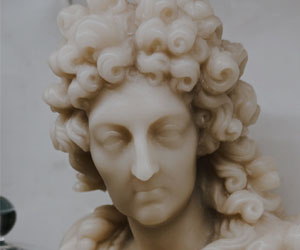 Fragrance Selection:The heart of any scented candle design is the fragrance. It sets the tone and evokes specific emotions. Whether you prefer the calming scent of lavender, the invigorating aroma of citrus, or the warmth of vanilla, the choice of fragrance is a crucial step in design. It's about more than just smell; it's about creating an ambiance that resonates with your space and your mood.
Fragrance Selection:The heart of any scented candle design is the fragrance. It sets the tone and evokes specific emotions. Whether you prefer the calming scent of lavender, the invigorating aroma of citrus, or the warmth of vanilla, the choice of fragrance is a crucial step in design. It's about more than just smell; it's about creating an ambiance that resonates with your space and your mood.
Wax And Color: The choice of wax and color is another essential aspect of design. The wax type can influence the candle's texture and burn time. Different colors can evoke different feelings. Soft pastels for a serene atmosphere, bold hues for a dramatic touch, or earthy tones for a cozy and grounded environment. The color should complement the chosen fragrance and the intended ambiance.
Container And Packaging: The vessel that holds the scented candle is more than just a practical element; it's a design statement. Containers come in a variety of shapes, sizes, and materials, from glass jars to tin cans, and even ornate ceramic pots. The packaging, including labels and boxes, can add a layer of elegance and sophistication to the overall design.
Wicks And Flames: The wick's size and type can influence how the candle burns and distributes the fragrance. Double-wicked candles can create a more intense scent release, while single wicks are ideal for a subtler ambiance. The design extends to the flame itself; many scented candles offer an aesthetic touch with wooden wicks that crackle gently as they burn.
The Power Of Scented Candle Design
Scented candle design is more than just aesthetics; it's about curating an experience. Here are some of the ways in which well-designed scented candles can elevate your space and well-being:
Aromatherapy: Scented candles are often used in aromatherapy to enhance relaxation, reduce stress, and promote better sleep. The right design can intensify these therapeutic effects.
Personal Expression: Scented candles can be a means of self-expression. The design allows you to showcase your personal style and create a signature scent for your home.
Gifting: A well-designed scented candle makes for an excellent gift. The thought and care put into the design demonstrate your appreciation for the recipient.
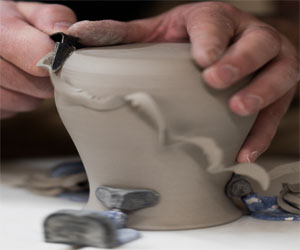
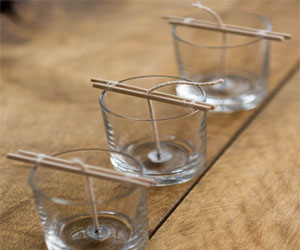


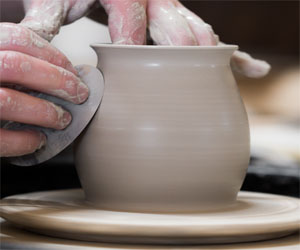

The Secrets To Healthy Skin And Hair
 Aloe Vera: Often referred to as the "plant of immortality," aloe vera is a powerful natural ingredient for skin and hair. It contains vitamins, minerals, and enzymes that soothe and hydrate the skin, making it an effective remedy for sunburns and irritations. Aloe vera is also known to promote hair growth and reduce dandruff.
Aloe Vera: Often referred to as the "plant of immortality," aloe vera is a powerful natural ingredient for skin and hair. It contains vitamins, minerals, and enzymes that soothe and hydrate the skin, making it an effective remedy for sunburns and irritations. Aloe vera is also known to promote hair growth and reduce dandruff.
Coconut Oil: Rich in fatty acids and vitamins, coconut oil is a beloved ingredient for both skin and hair care. It provides intense moisturization, leaving skin soft and supple, and helps with hair conditioning and preventing split ends.
Honey: Honey is a natural humectant, meaning it helps the skin retain moisture. Its antibacterial properties make it effective in treating acne, while its antioxidants combat signs of aging.
Shea Butter: Shea butter is a skin superfood. It's packed with essential fatty acids and vitamins that provide moisture and aid in skin repair. It's particularly useful for dry and sensitive skin.
Green Tea: Green tea is rich in antioxidants known as polyphenols, which help combat free radicals and inflammation. Consuming green tea or applying it topically can improve skin texture and protect against UV damage.
Avocado: Avocado is a source of healthy fats, vitamins, and minerals. When applied to the skin, it nourishes and revitalizes, leaving it soft and glowing. It can also be used as a hair mask to add moisture and shine.
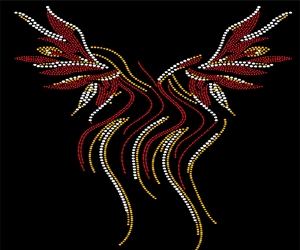 Floral Designs: Flowers are a prevalent theme in embroidery, symbolizing beauty, growth, and life. From delicate daisies to elaborate roses, floral designs are celebrated for their elegance and versatility.
Floral Designs: Flowers are a prevalent theme in embroidery, symbolizing beauty, growth, and life. From delicate daisies to elaborate roses, floral designs are celebrated for their elegance and versatility.
Geometric Patterns: Geometric shapes and repetitive patterns are a staple in many traditional embroidery designs. These symmetrical arrangements create a sense of order and balance.
Animal Motifs: Animals, both domestic and wild, are often featured in embroidery designs. They can represent local fauna, mythological creatures, or personal totems, adding an element of storytelling to the art.
Religious And Symbolic Designs: Embroidery often incorporates religious symbols, such as crosses or mandalas, or other motifs that hold cultural or spiritual significance.
Contemporary Innovations: In the modern era, embroidery designs have evolved to embrace contemporary aesthetics and innovations. Artists and designers experiment with unconventional materials, techniques, and themes, pushing the boundaries of traditional embroidery. This includes abstract designs, pop culture references, and even political statements, showcasing the adaptability of the craft.
Designing With Precision: Embroidery designs require careful planning and execution. Artists or embroiderers sketch the design on the fabric and choose the appropriate threads, colors, and stitch types to bring their vision to life. The precision and patience involved are integral to the art form.